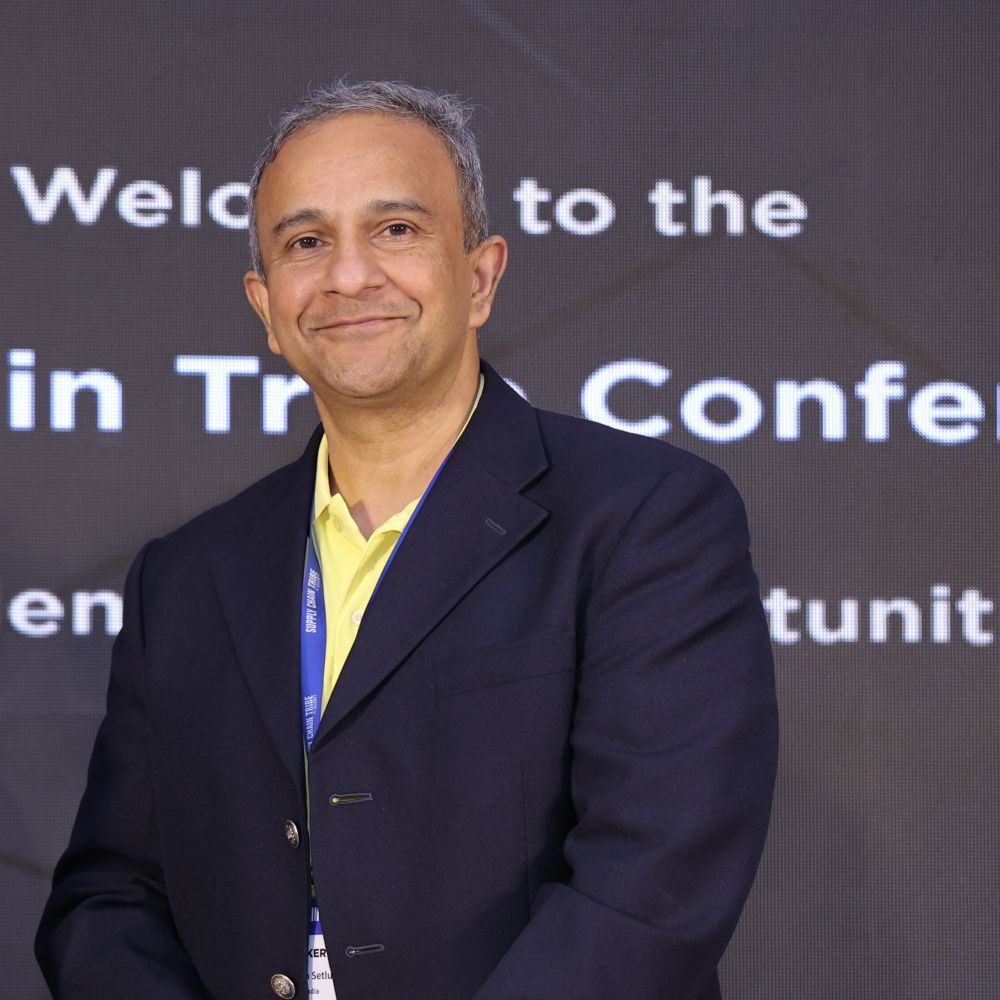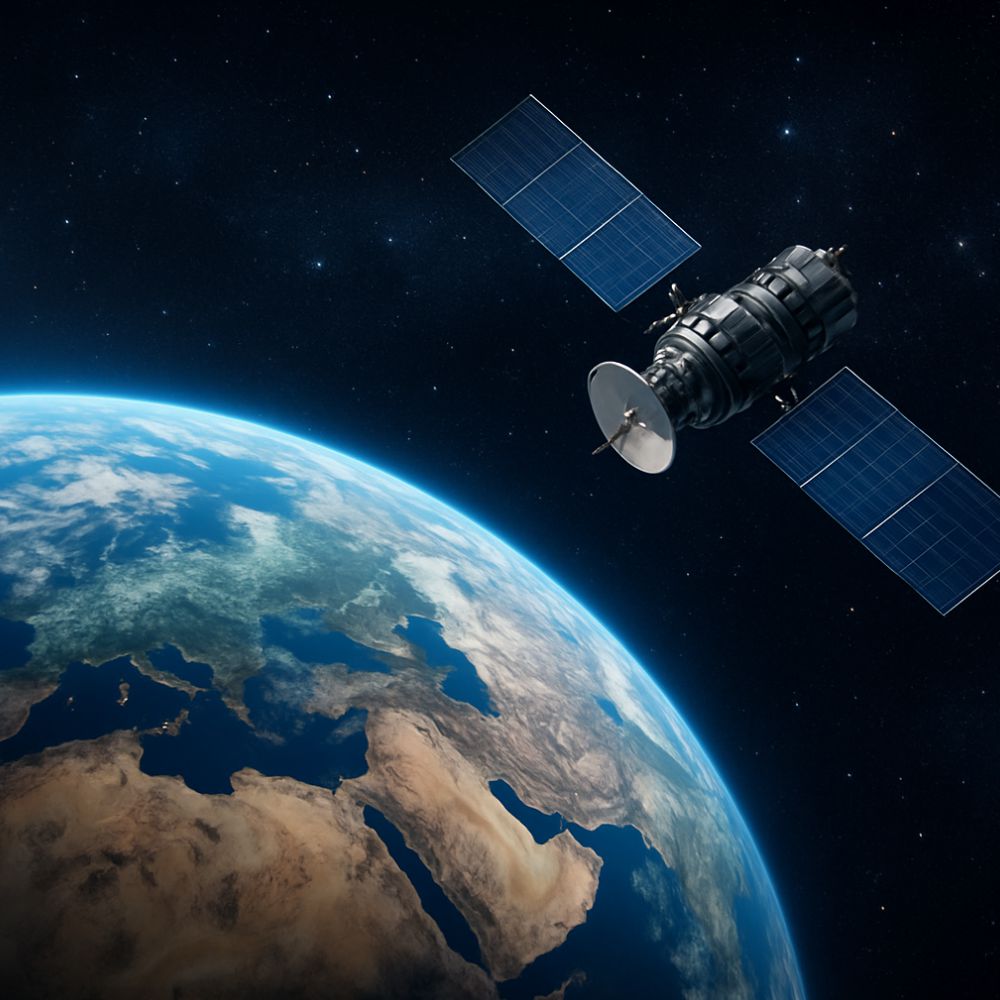“Creating a digital environment to manage the entire supply chain is absolutely critical if companies need to build resilience.” The Enterprise Innovation Challenge was conceptualized as a platform to zero in on the innovative approaches, trends, and technologies playing a crucial role in shaping the future of Digital Innovation. Through this platform, NASSCOM CoE team envisaged creating, leading, and stimulating a co-creation ecosystem that sparks innovation to amplify, enhance and scale up transformation in the Digital era and bring together the best minds and thought leaders from industry, academia, startups, and government to deliberate on building an innovative platform for solving relevant enterprise challenges. This maiden Innovation Challenge brought out the best supply chain tech startups, and we are proud to present the winning startups leading the pack with their innovative streaks…
To leverage the innovations created by the Indian entrepreneurs and to foster sustained engagement between Enterprises & Innovative Startups, NASSCOM CoE organized Innovation Challenge with Indian startups and premier Institutions for specific Enterprise's problem statements. In compliance with the directions, the Ministry of Electronics & IT Startup Hub (MeitY Startup Hub) collaborated with NASSCOM CoE to provide access to the platform, resources, startups, and institutions, which can be engaged in this process of solution identification based on problem statements as provided by enterprises.
THE NEED
The Ministry of Electronics & Information Technology (MeitY) in partnership with NASSCOM CoE launched Enterprise Innovation Challenge to identify impactful solutions from startups to address the problem statements identified by Jubilant Food Works, Diageo & ABInBev. The Enterprise Innovation Challenge with three (03) pre-identified problem statements tried to tackle challenges related to analysis and reduction of in-transit breakages by 50% or Asset Register through bar code/ RFID and Computer vision-based road and driver analytics platform.
On the successful launch of the maiden Enterprise Innovation Challenge, Enterprise Innovation Challenge, Dr. Ajai K. Garg, Director, Scientist-F, MeitY, stated, “Enterprise Innovation Challenge provided conducive platform to meet the market demand for quick identification and implementation of solutions through innovation. Initiatives like this are extremely crucial to accelerate innovative solution development & adoption for complex industry challenges through cocreation.”
While Sanjeev Malhotra, CEO, NASSCOM Center of Excellence IoT & AI, highlighted, “There is a need for a collaborative approach where the companies can quickly transform themselves through innovations to identify emerging challenges and provide solutions in the new normal. Initiatives like Enterprise Innovation Challenge are the need of the hour to help the enterprises discover and adopt ready-made solutions to speed-up their transformation journey in a faster and low-risk manner.”
ASTOUNDING PARTICIPATION
A host of budding and innovative startups participated in the challenge. There was intense brainstorming, confabs, and anatomizing of thought-provoking ideas in the house for two months. The shortlisted start-ups set forth their ground-breaking technology solutions that could address the problem statements identified by Jubilant Food Works, Diageo & ABInBev. Great minds from academia, industry, and business were part of this incredible platform in evaluating the use-cases that helped start-ups in moving in the right direction in terms of developing the right technology that fits best to the proposed use-cases.
This successful launch event brought forth many innovative companies and their incredible ideas to help user industry iron out their supply chain inefficiencies. The final event, NASSCOM CoE’s Enterprise Innovation Challenge- a first-of-its-kind initiative focused on The Digital Supply Chain Imperative (“The growing shift to smarter supply chains”), that took place on October 29th, 2021, where the challenge winners were announced, was dedicated to industry engagements, and developing collective capabilities.
The initiative has brought together the best minds from industry, academia, startups, and government to understand the pressing challenges/opportunities that exist in the supply and logistic sector. This episode of Enterprise Innovation Challenge deliberated upon building an innovative platform for solving challenges in the supply chain. The object of the exercise is to endorse Supply Chain 4.0 for ennobling dexterity, enhancement, and competitive advantage in the industry! The theme of this event revolved around the growing shift towards Smarter Supply Chain. The EIC platform zeroed-in on the innovative approaches, trends, and technologies that are playing a crucial role in shaping the future of the supply chain.
The various discussion topics and the expert panel shed light on how the supply chain industry has undergone a sea of change in the past few years & how the deep tech companies are rethinking their way to design to build future-fit supply chains.
As they have already set the bar higher with such a successful maiden event, NASSCOM CoE looks forward to furthering events, which will allow them to share the platform with great leaders and promising startups from the supply chain domain. This technology and innovation rendezvous will unlock new possibilities to overcome the challenges and enrich the supply and logistic industry!
CASE STUDY 1 - Orama Solutions
Analysis and reduction of in-transit breakages by 50% for Anheuser- Busch InBev India
Packed beer FG (bottles/cans) are pressurized containers, which, if exposed to extreme handling, temperatures (or any other factor coming from analysis) may tend to burst/leak. This could also have a cascading effect on the carton damage in vehicles, leading to further breakages. An analysis of factors therein is imperative to understand what transpires en-route, determining actions for reducing/eliminating such losses.
ANHEUSER-BUSCH INBEV India was looking for a solution for root cause analysis to understand in transit breakages of beer bottles/cans. The company is a global player in beer industry with 630 brands of beer and operations in 150 countries. Orama Solutions LLP is a startup, which aims to provide solutions to complex industrial problems using Artificial Intelligence, Computer Vision and Embedded Technologies. Orama Solutions is founded by Harshit Aggarwal & Shrinand Aggarwal providing innovative solutions like Smart Industrial Weighing Scale, Real Time Tank level monitoring system, Dimensional/ Volumetric Weighing System and Quality Inspection Systems.
Background
India is a large country with a typical arrangement of a remotely located factory supplying products across the nation. Mostly, the manufacturing is decentralized (multiple factories) to allow for logistics efficiency. This results in a lot of goods moving through Indian roads in trucks of varying sizes and then finally being distributed to shops. While moving through the supply chain these bottles/ cans, being pressurized containers, leak causing damages. These damages need to be ascertained and replaced at distributor level. Moreover, the leaking/ broken bottles also spoil labels of neighboring bottles amplifying damages.
This creates enormous financial loss for a global bottled beer company as well as dents brand image. AB InBev India is India's second largest beer company with more than 20% market share. In-transit breakages of Packed beer FG lead to unwanted supply chain losses, adding to operational overheads. Reduction in same would lead to bottom-line improvement.
Challenge
The Problem Statements includes Analysis and Reduction of in-transit breakage of beer bottles/cans. Bottles are packed into cartons and then the cartons are stuffed in trucks. The company uses third party vehicles and doesn’t employ a reverse logistics mechanism, which makes repatriation of IoT devices another challenge. Moreover, open body as well as closed body trucks are used for transportation. The trucks are of varying sizes and leave space on the sides while stuffing creating voids and leaving scope for carton movement. Any movement in the carton or the bottle creates rattling inside the carton which is suspected to cause packaging failure. Moreover, the road bumps, potholes, turns, speed, vibration, temperature, etc., are all contributing factors, which must be monitored.
Innovation
To get a fair assessment, it is suggested to first isolate the contributing factors to breakage. Orama Solutions has proposed to create a 3D printed replica of an actual bottle. This bottle will have various sensors to capture the experience of a bottle during a journey. The raw data of the journey will be divided into various insights like bumps, turns, temperature, speed, etc. Threshold values shall then be determined for each contributing factor. Once the main features have been identified, corrective action to reduce breakages can be created easily. For the first time, a solution of this sort will be tested in the beer industry.
Implementation Benefits
AB InBev will be able to reap multiple benefits from this study. The company will get insights into exactly what is causing packaging failure. This will help not only in bringing down direct breakage loss and replacement to distributors but also increase shelf appeal of neighboring bottles, which are partly affected by the leakages. Moreover, the concept can also be deployed on filling /bottling lines to get more information of processing line parameters to reduce process breakages. Since the concept is modular, it doesn’t need any modification in the current setup. The reverse logistics can be worked out by deploying third party courier agency for repatriation of sensors.
Orama Solutions is very excited to work on the project and is confident to gather valuable insights for beer industry with this project. The project has been coordinated with Nasscom’s Centre of Excellence, Bangalore along with AB InBev India.
CASE STUDY 2 - SiSoC Semiconductor Technologies Pvt Ltd.
Asset Register to Track asset presence / movement across sites for Diageo India Pvt. Ltd.
Diageo India wanted to enhance traceability of assets available at sites and transfer of assets between sites. This was to ensure easier physical identification of fixed assets. They also needed to avoid discrepancies due to Manual Asset management system by proposing a solution that all the fixed assets are to be labelled and mapped to a barcode and sensors. SiSoC Semiconductor, through their innovative offering, aided the company in making the entire process automated and extremely efficient. Here’s the insightful case study describing their plan of implementation.
DIAGEO INDIA is one of India's leading alcohol beverage companies producing and distributing premium alcohol brands for the consumer from its 50 manufacturing facilities spread across Indian States and Union Territories. In these manufacturing facilities, company has many assets, which may be movable or immovable assets. The company has fixed assets like packaging machines, utility equipment, tanks, material handling trucks, lab instruments, etc., at various sites.
Challenge
At many instances, there are requirements that require these assets to be shifted from one manufacturing facility to other on demand basis. Also like any other manufacturing companies, the assets are being tagged and registered in a Software-based Registry. All the registry is done using manual operation where employees audit the asset and manually update the registry. The manual way of auditing and registering the asset can work-out for smaller manufacture units, while companies like Diageo, who has multiple facilities across locations, cannot handle reliable asset tracking and registry solution. Also during auditing phase, tracking the exact location of an asset within a facility itself is a challenge. This creates discrepancies with the audited data and previous reference data.
Background
A wide range of tracking technologies are available to cater the business needs. Arranged from the most localized to the most global and ubiquitous, today’s leading asset technology categories are Barcodes; RFID; Ultra-wideband (UWB); Bluetooth / BLE; Wi-Fi; LPWAN technologies; Cellular; GNNS (GPS), etc.
Choosing the right asset tracking technology depends on the end-use. Whatever the use case, a few general parameters can help you make a smart decision. These include:
- Desired accuracy or granularity of data
- Update rates for each assets being monitored
- The number of assets being tracked
- The value of assets being tracked
- The costs or risks associated with asset loss
- The physical environment(s) in which tracking is carried-out
- The global / locational area.
- Ease of use, including installation of the asset tracking technology
- Costs to purchase and maintain an asset tracking system
- Requirements for collecting and transferring asset ID or other metadata
Though SiSoC Semiconductor Technologies could work on any of the above technologies, considering the use case and future growth perceptive, the company proposed to use LPWAN Technologies.
Solution
SiSoC, with their expertise in IoT Solutions, had finalised to use LoRaWAN based Asset Management solutions. Aptly designed LoRaWAN sensors stores an ID that is mapped with the bar code of particular asset. These sensors are Low cost, Long Ranges and Ultra-Power devices that transmits the Asset data to the main server on regular interval.
With our custom-made Hardware and Software solution, the collected asset data is curated and integrated with existing SAP system.
LoRaWAN Wireless technology: The LoRaWAN® specification is a Low Power, Wide Area (LPWA) networking protocol designed to wirelessly connect battery operated ‘things’ to the internet in regional, national or global networks, and targets key Internet of Things (IoT) requirements such as bi-directional communication, end-to-end security, mobility and localization services.
SiSoC Semiconductors is one of pioneers to work in LoRaWAN Technologies. SiSoC has broad set of IoT Products based on LoRaWAN wireless Technologies that include Smart Water Meter, Smart Energy Meter and Smart Gas Meters.
Expected Outcomes
Solution comprises of Low cost LoRa Tags. These tags will be attached to the assets to be tracked. The tags send data (Serial Number, Part details, Specifications, Location, etc.) to the cloud and integrated with existing SAP database. The solution is simple, use minimum number of devices with no modifications or disturbance to existing infrastructure. There is a flexibility to add more features in future (like capture asset related live data like temperature, pressure, flow, energy consumption, etc.) and add predictive & prescriptive analysis of every asset. With this, the end-toend fixed asset management system is automated with best of IoT Technology available in Industry.
CASE STUDY 3 - Roadcast Tech Solutions
Reduce secondary distribution vehicle accidents and breakdown through road condition for Jubilant Food Works
It has been observed that accidents of refrigerated trucks happen due to drivers' loss of focus on the road due to drowsiness during driving and reckless driving. Whereas vehicle breakdown can occur due to wear & tear of mechanical parts and irregular maintenance/repairs, distribution of goods to the restaurants requires utmost care of maintaining the material temperature and following the hygiene protocols. Any deviation in the process can lead to food safety concerns. Here’s an interesting case study that helped Jubilant Food Works solve this complexity…
JUBILANT FOOD WORKS engages 200+ refrigerated vehicles for distributing raw materials to the Dominos/Dunkin/Other restaurants. These are mission-critical supplies, and any delays due to unforeseen circumstances may result in operational challenges due to material shortages. Unforeseen circumstances such as vehicle breakdowns, accidents, natural calamities, or political unrest cause significant supply delays, forcing restaurants to close. Mitigating these risks is essential for business continuity.
While we cannot influence natural calamity or political unrest, vehicle breakdown and accidents can be avoided. All vehicles have a policy of double drivers, so that the vehicle is on the move without breaks to maximize the vehicle utilization and reach the destination in time. Our observation is that vehicle accidents usually happen during night hours, where the driver tends to sleep while driving. Observing the driver behavior and road conditions are crucial for reducing accidents and important for post-accident analysis. Vehicles are maintained and managed by the vendors, and as a client, JFL policies for penalizing vehicle breakdowns. Even with a penalty clause in place, there are vehicle breakdowns, leading to supply delays. Reducing vehicle breakdowns is crucial for improving on-time delivery.
Problem Statement
Reduce secondary distribution vehicle accidents and breakdown through road condition, driver behavior and vehicle condition monitoring/analytics. Improve the distribution process compliance and reduce food safety risk by measuring temperature compliance through our iOT devices. Provide end-to-end visibility of the vehicles that are being sent out of the distribution centers with the consignments/packages along with dedicated monitoring of loading/ unloading process. Entire vehicles trip details will be captured which include In/Out time of vehicles through AI, time taken for the loading, etc.
Background
For businesses that provide delivery services, it is imperative that they stay on top of their delivery teams, monitor their performance, and guide them real time information as they go out in the field. It is also essential that resources such as trucks and other delivery vehicles are well managed to ensure high profitability. As an IT company, Roadcast Delivery and Order Management Software gives businesses a reliable platform that lets them track their delivery teams and their deliveries in real-time by offering end-to-end supply chain visibility & logistics automation by connecting drivers and vehicles onto a single platform. Roadcast’s unique IoT capability allows businesses to monitor important parameters such as driver behavior, movement & report any violations which helps the organization’s vehicles reduce accidents and breakdowns.
The platform also offers a mobile application for driver management with additional features for capturing fuel details, attendance management, shift planning of drivers alongside real time tracking.
Creating data reports is a time intensive task and can be prone to many errors, such as duplicate data entry, inaccurate calculations, and more. With RoadCast, reports are automated and digitized. Keeping data and creating monthly assessments are no longer manual processes, saving you time and effort that you can use elsewhere. Hence, Roadcast saw this challenge as an opportunity to showcase the solutions that would help Jubilant meet its visibility requirement for drivers and vehicles.
Innovation
The solution offered by Roadcast combines the power of an AI enabled dashcam that will monitor the driver behavior and report any violations/ hazards such as fatigued driving, distraction and smoking. Also, the device will monitor the real-time vehicle parameters such as speed to ensure that the vehicle is not over speeding. Along with this, the proposed solution also involved a mobile application that uses image recognition to identify vehicles from their license plates. This App will also allow the business to track & manage the movement of the vehicles within the hub/facility while tracking other activities such as loading, unloading, idle time, docking, etc., using real-time data.
IoT sensors trace food products, followed by monitoring of food safety and quality. It mainly monitors temperature, humidity, and location. A food temperature sensor will improve food safety in your vehicle by continuously monitoring the temperature and power status of your equipment. When an issue is detected, such as an increase in temperatures or loss of power, your sensor will immediately send you an alert to notify you of the situation. These notifications will allow you to quickly resolve the problem and reduce the chance that the product becomes unusable. Every second is being counted when an issue arises involving food safety in your vehicle.
Our driver management solutions monitor behaviours like rapid acceleration, inefficient or sudden braking, and high-speed turns or jerks on the wheel to measure drivers’ alertness and general safety while driving. By monitoring driving behaviour over time, the solution can alert drivers and managers to issues like fatigue or unsafe conditions and chart a driver’s improvement to adjust insurance premiums. It allows supervisors to remotely monitor the performance of drivers, optimizing their performance to reduce fuel costs, to increase fuel efficiency and increasing the safety of their drivers on the road. Track driving behaviours over time to measure driving practices and reward improvement.
Implementation Benefits
The solution is currently being implemented. Once deployed fully, the proposed solution will increase the operational efficiency and help reduce discrepancies. It can be configured to identify and track sudden acceleration or braking, speeding, high-speed turning, frequent stopping, and slow driving on a per-driver basis. Supervisors can use these reports to track individual driver’s performance, harsh breaking & harsh accelerating, identify fatigued drivers, capture fuel efficiency, decline in accidents & breakdowns and flag unsafe driving practices. With IoT technology to help trace food shipments, monitor safe temperatures and prevent contamination, the future of food safety looks healthier.

Categories

Magazine Editions






















